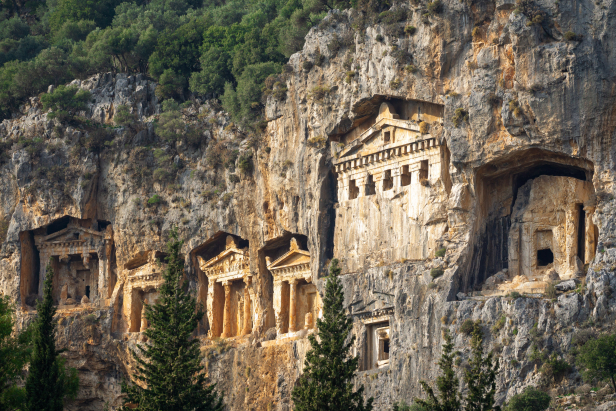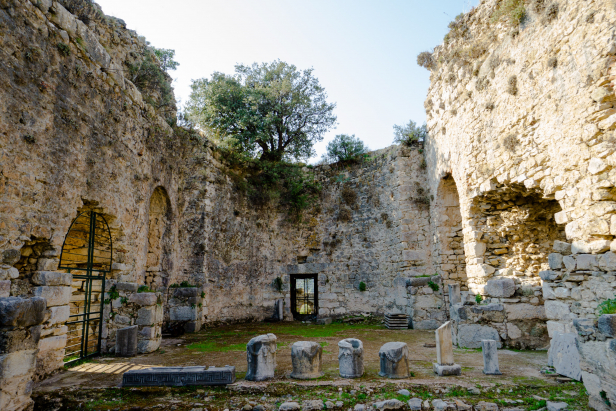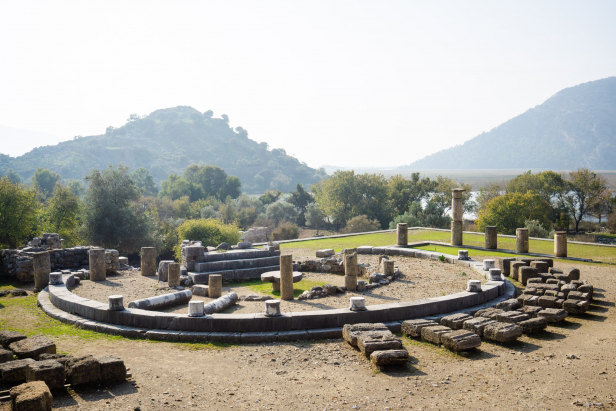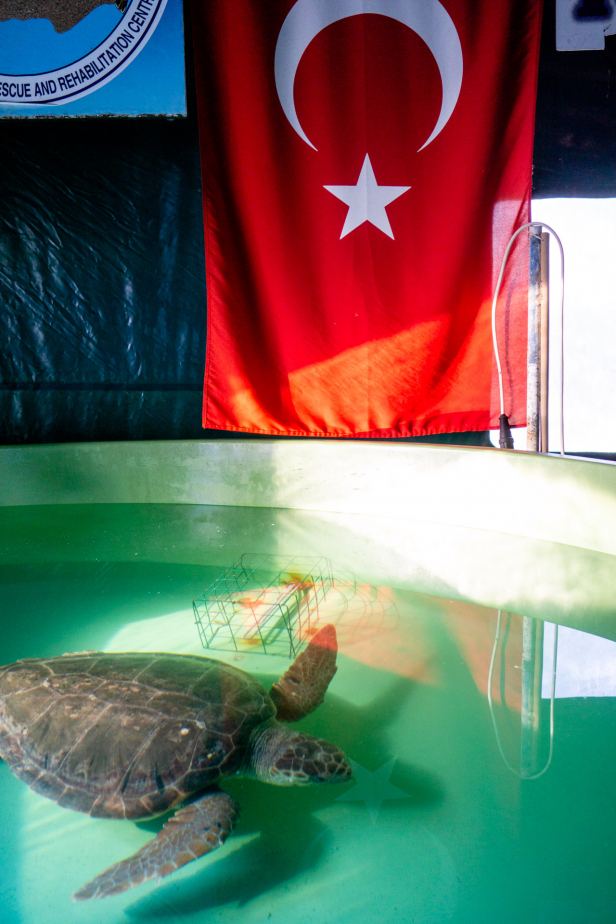Dalyan, Ancient Kaunos and Iztuzu Beach
(Dalyan, Kaunos Antik Kenti, ve İztuzu Plajı)
/ By Josh
Cost: Varies by site and season
Great for: Greek History, Roman History, Beaches, Sea Turtles, Boat Tours
With its stunning natural setting, kilometers of fine sand, scenic historical sites, and even sea turtles populating the shores and lagoons, Dalyan is one of Turkey’s finest seaside destinations. The village of Dalyan is set on the banks of a picturesque river that winds its way between high limestone cliffs and reed filled marshes out to sea while wooden boats ply the calm waters shuttling visitors between the beach, village, and hotsprings. More than just a ruined city along the coast, Dalyan has something to offer everyone.
Subscribe to The Art of Wayfaring
The charm of Dalyan is deeply connected to its history with a landscape and coastline that has evolved dramatically over the nearly 3,000 years since the first city was founded here. The marshes, fields, and nearly four kilometers of sandy beaches, eventually became the demise of Kaunos, the first city on this site.
The city of Kaunos (also written Caunos) was founded during the 10th century at the latest. It grew up as an independent city state and later fell under Persian control. After this it was incorporated into Caria and later Lycia. Kaunos was situated at the border between Caria and Lycia, where the Mediterranean meets the Aegean, making it perfectly situated to access the trade between these wealthy regions of the ancient world. Along with the wealth of the port itself, Kaunos was an important exporter of dried figs and salt. The remains of the salt production center has been discovered near İztuzu beach, shedding light on how salt was produced in ancient times.

The culture of ancient Kaunos was much like its geography; while the city uniquely Kaunosian, it also reflected its close ties to the rest of Caria as well as elements of neighbouring Lycian culture. The language of Kaunos was unique to the city, though it reflected elements of the old Carian language, neither of which were well understood until a bilingual stele bearing Greek and Carian (Karian) were discovered at Kaunos. With this inscription Carian was better understood and from there experts were able to gain new understanding of Kaunosian.
The story of Kaunos is much like the northern Carian city of Herakleia ad Latmos, in that both cities were established as ports on wide bays that were slowly closed off from the sea by silt. When Kaunos was first established it was built on a high acropolis jutting out into this wide bay with a sheltered port on its north and southern sides. Though Kaunos was a port city, by the 3rd century BC it was already beginning to struggle with the slow process of silting that threatened to close the ports and access to the sea.
Despite this threat, the city continued successfully as rule passed from Persians on into the Hellenistic period and into the Roman. Even on into the early Byzantine period Kaunos (which was renamed Kaunos Hagia) still remained a relatively successful city with large churches being built and church leaders being listed among other important leaders at church councils.
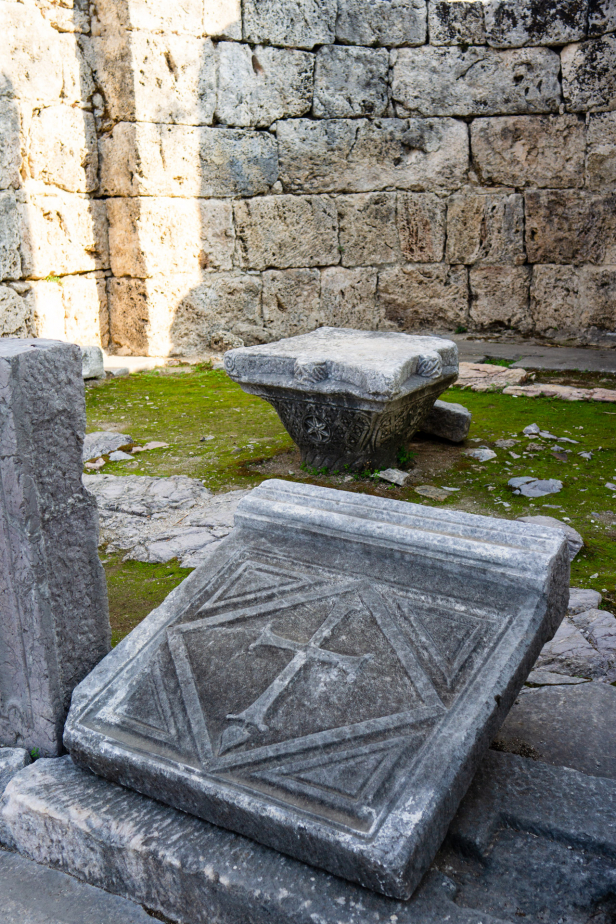
While many other classical cities in the region suffered from devastating earthquakes in the first century, Kaunos seems to have fared better than many of its neighbours which has meant that many of its pre-roman buildings have survived where in other cities nearly all the buildings can be dated to the Roman era.
In the 6th century the coastal cities began to go into decline due to raiding pirates and the expansion of the Arabs in the region. Added to these region-wide woes, the bay was silting up, cutting of the city from the all-important sea trade. The bay turned into a marshland of serpentine waterways and lagoons rife with malaria carrying mosquitoes which became a plague to the local population, forcing the eventual abandonment of the city.
While mosquitoes are still very much a problem in Dalyan, malaria, thankfully, is not.
Why Visit?
Kaunos Ancient City
Necropolis and The Tombs of the Kings
The people of Kaunos had a unique culture of their own, while being politically Carian they were culturally different. While they were directly on the border with the Lycians they remained unique, however, their funerary traditions strongly reflected that of the Lycians with their grand rock cut tombs designed to look like temple buildings peering out from high in the cliffs. In total there are 167 tombs belonging to the necropolis of Kaunos though the Tombs of Kings are by far the most impressive.
The tombs are best seen from the village of Dalyan where they loom above the trees and reeds of the far river bank. There are two sets of tombs here: one group of six tombs, smaller on average, and another group of seven, slightly closer to Dalyan. In the group of seven the largest tombs was abandoned before it was finished.
Beyond these there are other tombs nearer to the ruins of Kaunos itself as well as one on the east side of Dalyan Village carved into the high rock that juts out of the flat plain.
Roman Baths
Entering the Museum grounds, the first sight you’ll come to are the remains of the Roman Baths, one of the best-preserved structures in the city. The Baths were built in two parts: a wide courtyard (palaestra) and the bath house proper. The baths consisted of a number of wide vaulted rooms, each heated to different temperatures. Thanks to the sheer size of the blocks many of the walls and archways have survived.
The Domed Church
Built in the 6th century, this Byzantine church is an early example of this type of three aisled domed church. The church has survived in fair condition though its dome is missing. The mosaic floor of the east chapel is quite fine as are some of the masonry details found in the church’s main naos.

Observation Platform
Other than the incredible quality of the masonry there is nothing immediately impressive about this simple structure set between the Domed Church and the theater. However, this simple three-stepped circular structure was marked into 16 equal parts and designed for scientific measurements and city planning. It has been connected to the famed Greek astronomer and geographer Hipparchus of Nicea who lived in the 2nd century BC on the nearby island Rhodes.
Kaunos Theater
Built below the original acropolis of Kaunos, the theater was built combining elements of Hellenistic and Roman design concepts. It could hold 5,000 spectators and is still in fair condition though the stone has been badly eroded. In the orchestra and on the eastern side of the theater you can see the exposed bedrock carved out to form the foundation of the theater structure. The theater is still used to day to host events.
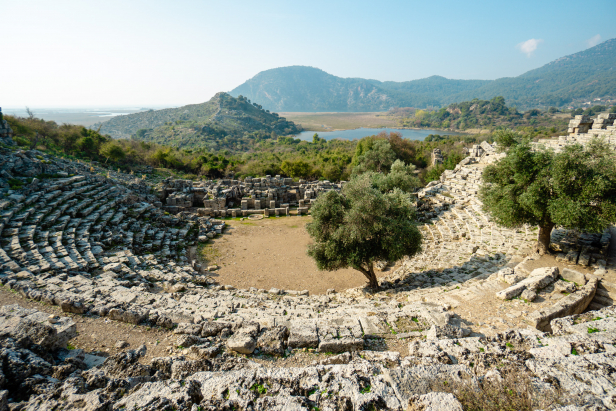
Built into the back of the theater was a small fountain structure of fine masonry. The fountain would have served the crowds visiting the theater as well as those passing from the lower city up to the acropolis.
The Terrace Temple of Zeus Soteros
Built along the roadway connection the upper and lower parts of Kaunos, the Temple of Zeus Soteros has retained much of its 1st century BC design. The temple consisted of a roughly square courtyard surrounded by a stoa of Doric columns. On one side was built a small classical temple and along another side a near circular shrine. Six meters below the shrine a three and a half meter tall sacred stone was found. The pyramidal stone was a symbol of Kaunos and was even shown on the coins minted in the city. Sacred stones such as this are incredibly rare in the region.
Nymphaeum
Descending further from the Terrace Temple, passing through a residential section of the city you will come to a relatively simple Nymphaeum, or fountain shrine dedicated to the Nymphs. The fountain is relatively simple in design with the fountain pool being contained in a nearly enclosed rectangular structure. Perhaps the most interesting part of the nymphaeum is the massive inscription covering large portions of the building’s exterior. The inscription details the custom laws at a strategic location near one of the city’s ports where duties would have been paid for goods.
The Lower Basilica
The lower Basilica church of Kaunos was originally built in the 2nd century as a massive 98-meter-long structure. Only later was it converted into a church during the Byzantine Period. The building was designed with three long aisles, running parallel to the southern harbour. Recent excavations have unearthed graves around the building.
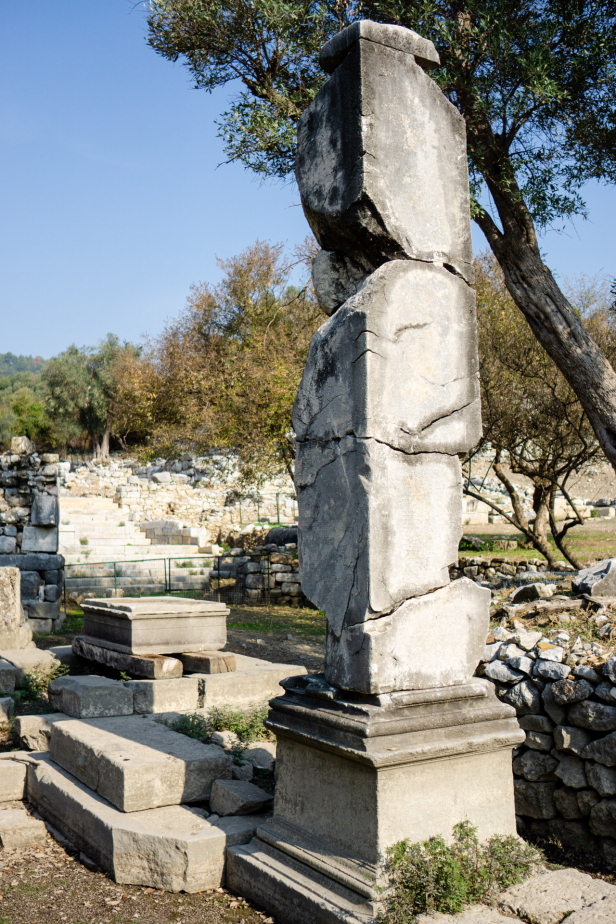
Harbours of Kaunos
Kaunos was home to a pair of naturally sheltered ports with the main port on the north side of the city and a lesser one to the south. The north port is now completely silted in and farmed. A few lesser rock-cut tombs can be seen on the far side of the harbour from the upper parts of the city.
The southern harbour has become a haven for flamingos and waterfowl rather than ships. The basin is still filled with water though now reduced to a shallow pool, appropriately named suluklu gölü, or leech lake, and surrounded by reed beds. Today there is only a narrow channel still open from the lake to the river which winds its way to the sea which is now 2.5 kms away from the city.
The Town of Dalyan
With the slow-moving waters of the Dalyan stream, high limestone cliffs, lush fields and groves, and grand tombs as its backdrop, the founders of Dalyan could not have picked a more picturesque location. Sights and activities abound in every direction and yet the town has maintained the feel of a bustling village. There are shops selling local wares, and if you happen to tire of Turkish cuisine there are Indian, Chinese, and Western restaurants to try as well. To get to the west shore you’ll have to catch a small ferry or even hire a rowboat which only adds to the slow pace charm of the place.
İztuzu Beach
Access to beach is 15TL per vehicle
While İztuzu beach may have been the demise of Kaunos, today it attracts thousands of tourists to its nearly four kilometers of soft pale sand. The beach extends like a massive sandbar, jutting out from the cliffs on the east across the mouth of the river, lagoons, and marshes. During the summer the calm waters of the sea and sheltered lagoons attract Loggerhead Turtles and Green Sea Turtles who come to lay their eggs in the soft sand. The beach can be accessed by road or boat tour from Dalyan.
Subscribe to The Art of Wayfaring
Sea Turtle Research Rescue and Rehabilitation Center
Access to beach is 15TL per vehicle, entry to the Turtle Rescue center is included
At the southern end of İztuzu beach just uphill from the beach parking lot is a small sea turtle hospital where you can learn about the local species, the challenges they face and most importantly what we can do to make sure these animals can thrive.
The center has a testing and operating room for the turtles as well as a set of large tanks for rehabilitating turtles. Turtles in here suffer from various injuries. Some can’t dive due to a build up of gas in their gut caused by swallowing fish hooks or mistaking plastic bags for jelly fish. The built-up gas keeps them from being able to dive which keeps them from feeding. Others have been injured by boat propellers and, even worse, intentional attacks by people trying to get them out of their nets. When the turtles have recovered enough they get released back into the wild.
To learn more or support the work check out the official DEKAMAR website.
Hotsprings and Mudbaths
The area around Dalyan is home to a number of hotsprings and hot mudbaths with locations at Sultaniye as well as on the west bank near the car ferry on the north edge of the town. Some of the larger hotels will also include mud baths in their spa. The baths at Sultaniye are set on the shore of Lake Köyeceğiz and were home to an ancient Temple dedicated to the goddess Leto, mother of Apollo, and the goddess Artemis.
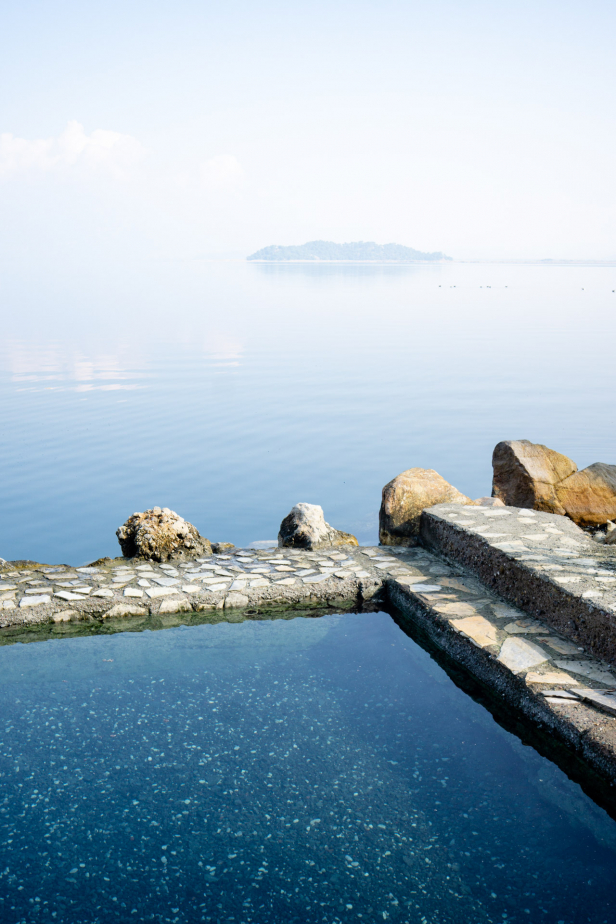
Boat Tours
The sights surrounding Dalyan are rather difficult to reach considering how close they are to eachother. Thanks to towering cliffs, rivers, swamps, and a lack of bridges, you may have to drive a fair distance from one place to another. For many, the best way to travel is by the tour boats that ply the waters of the Dalyan stream, Lake Köyeceğiz, and the waterways of t

he lower estuary. Along the way you will get the best view of the Tombs of the Kings, see sea turtles, and get a unique vantage of the beautiful landscape.
Prices will vary a lot depending on season or if you join a tour or hire a private boat. A private boat will cost more but will give you more control over where you go and when.
How To Get There
Public Transit
There is bus service to Dalyan from Muğla and Fethiye, both of which are well connected to other major cities.
Car
The town of Dalyan sits just south of the D400 highway that runs between the towns of Akyaka in the north and Fethiye in the south. If you are coming from the north, follow the D400 south, turning right by the village of Kavakarası. You will actually see signs for Dalyan before this near Doğuşbelen, but this route will require you to take the little ferry across the river which will most likely add a fair bit of time, whereas driving around the lake is quicker (and cheaper). From the direction of Fethiye, turn left off of the D400 highway at the town of Ortaca and continue on the aptly named Ortaca-Dalyan road as it winds through the country into the town of Dalyan.
For more about car rental and driving in Turkey make sure to read our full drivers guide.
Plane
Due to the ruggedness of Muğla Province, the primary airport is not near the city center but in the south of the province in the Town of Dalaman and only 30 kms from Dalyan. The areas popularity with foreign tourists means that there’s even direct flight from a number of European cities.
Where To Stay
Dalyan is a bustling town that has done an excellent job at catering to visitors with numerous small hotels, some larger hotels built to look small and boutique, and even villa rentals to choose from right in the heart of Dalyan. If you have your own transportation there are lots of other options on nearby beaches and in the pine forest hills that have more of a secluded and natural feel compared to the bustle of the town itself.
Other Tips
Planning on visiting Dalyan or the ruins of Kaunos? Make sure to check out what other sights are in the region!
Subscribe to The Art of Wayfaring
Have any tips or info to add? Spot any mistakes? We’d love to hear about it.
